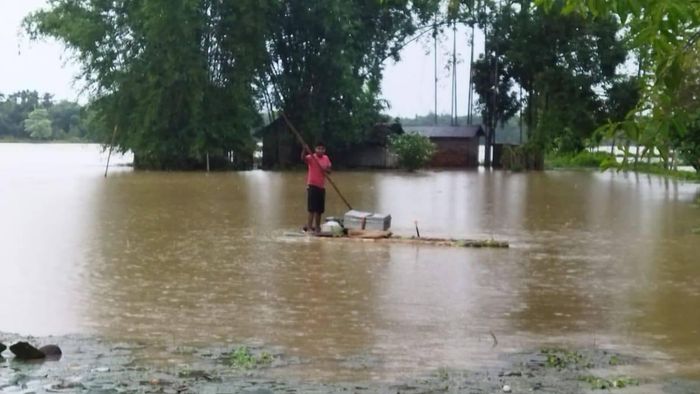Assam floods wreak havoc affecting over 33,000 people across 14 districts
Lakhimpur district has been hit the hardest, with 25,275 people affected, followed by Dibrugarh with 3,857 and Tinsukia with 2,666.

- Jun 18, 2023,
- Updated Jun 18, 2023, 9:17 PM IST
The state of Assam has been battling severe floods that have left a significant impact on the lives of its residents. According to the latest report by the Flood Reporting and Information Management System, a total population of 33,412 has been affected by the floods as of June 18, 4:00 PM.
Lakhimpur district has been hit the hardest, with 25,275 people affected, followed by Dibrugarh with 3,857 and Tinsukia with 2,666. The floods have caused widespread damage across 14 districts and sub-divisions, including Biswanath, Cachar, Darrang, Dhemaji, Dibrugarh, Golaghat, Hojai, Lakhimpur, Nagaon, Nalbari, Sonitpur, Tinsukia, and Udalguri.
The urban areas of Cachar, Kamrup (M), and Nalbari have also been grappling with the devastating effects of the floods, further exacerbating the situation for the residents.
Apart from the human impact, the floods have taken a toll on the region's animal population as well. A total of 20,405 animals have been affected, including 13,587 large animals, 6,316 small animals, and 502 poultry. Tragically, 21 animals have been washed away by the floodwaters.
The rescue and relief operations have been actively carried out by the National Disaster Response Force (NDRF) and the State Disaster Response Force (SDRF). Five boats have been deployed to aid in the evacuation efforts, and a medical team comprising four personnel has been deployed to provide medical assistance to those affected.
The floods have also caused significant damage to the infrastructure, particularly in Biswanath and Gohpur. Embankments have been affected, leading to erosion along the banks of rivers Solengi and Sessa. The severity of the situation has prompted the deployment of resources from various departments, including the Water Resource Department and the Panchayat & Rural Development Department.